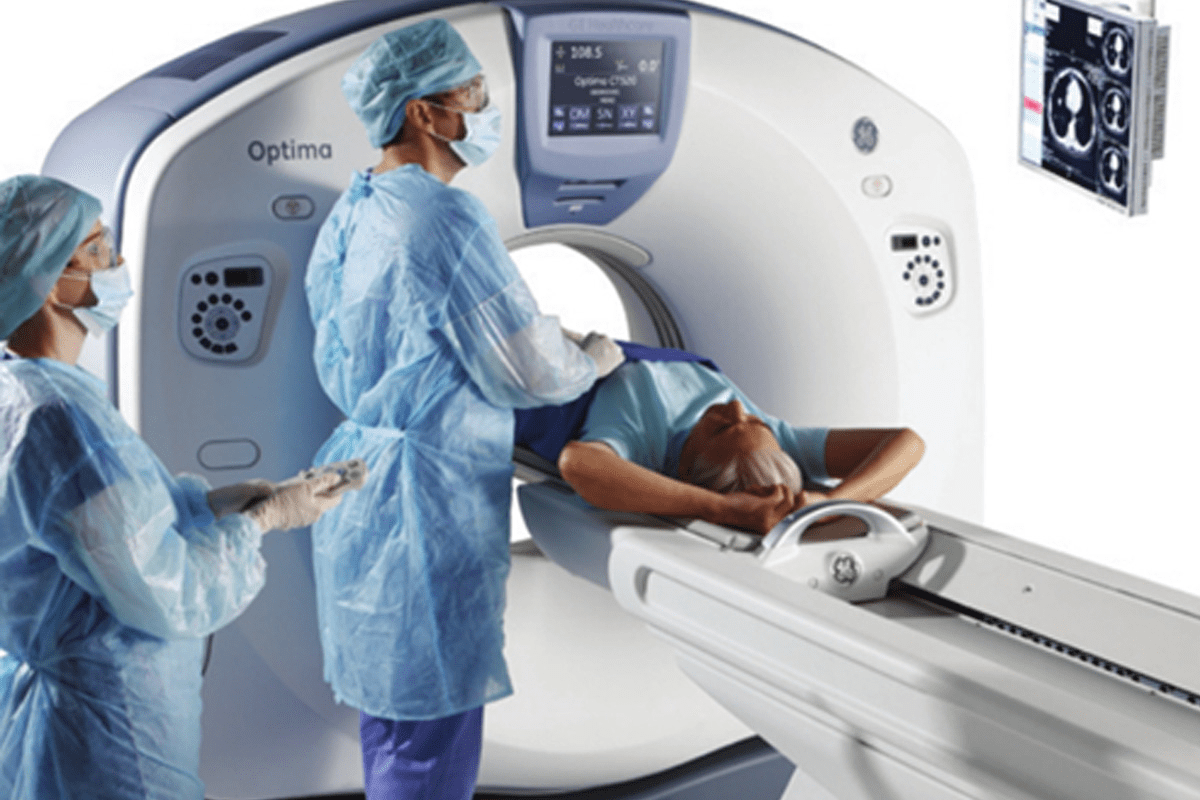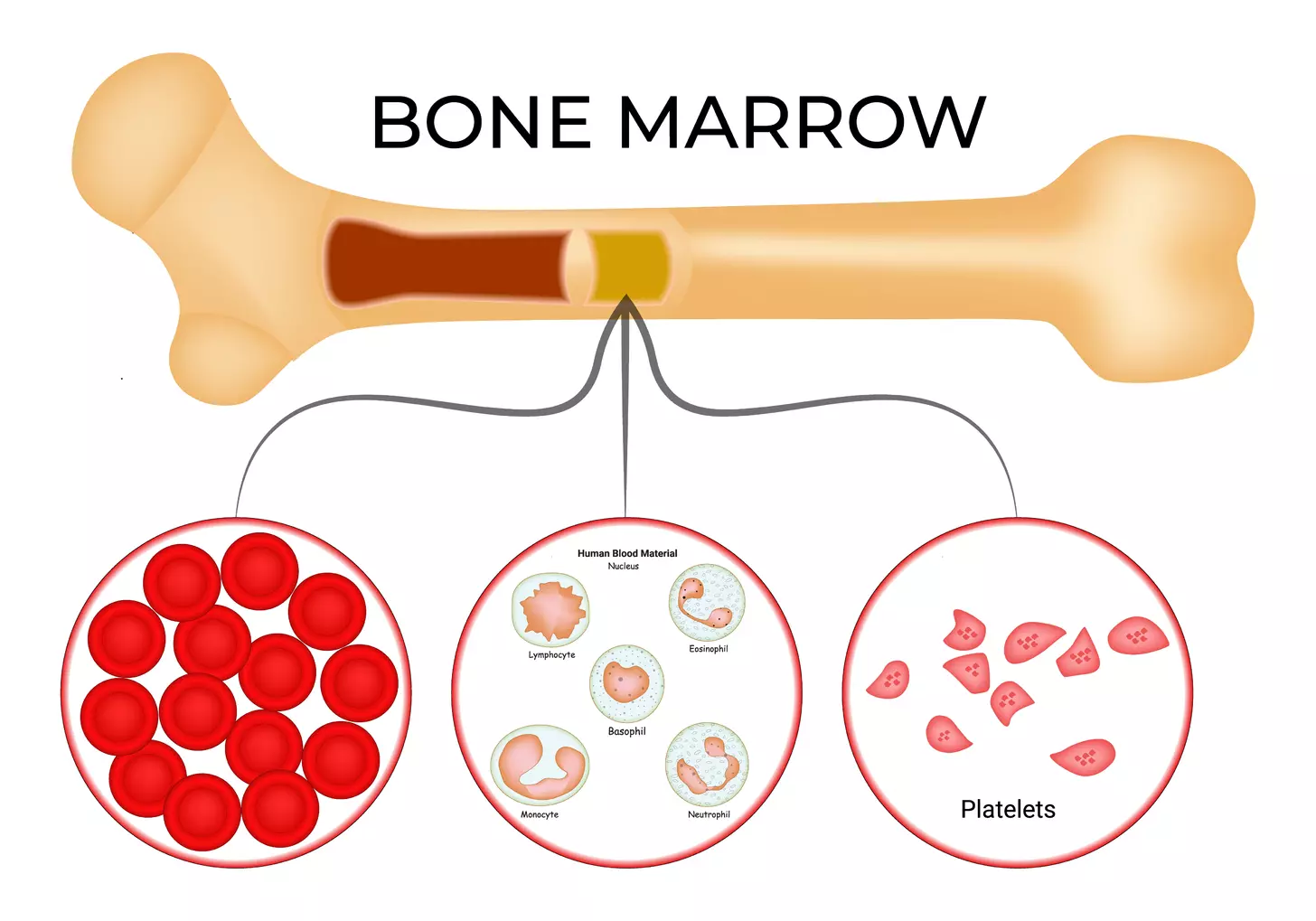Last Updated on November 26, 2025 by Bilal Hasdemir
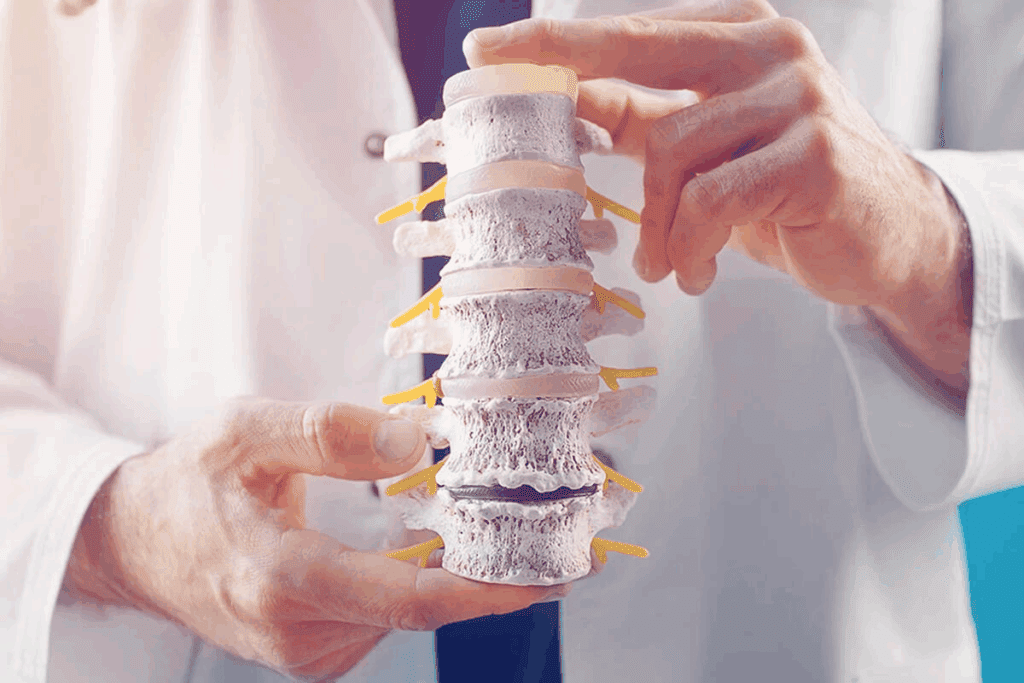
Vertebral compression fractures can really hurt a patient’s quality of life. They cause a lot of pain and can get worse over time. This is because more pressure is put on other vertebrae.
These fractures often happen to people with osteoporosis. But, they can also affect younger people who have had a big injury.
Liv Hospital’s team uses two special treatments for these fractures. They are kyphoplasty and vertebroplasty. Both methods use bone cement to make the fracture stable and stop the pain. But, they do it in different ways.
One method uses a balloon to make the vertebra taller before adding cement. The other just adds cement without making the vertebra taller.
It’s important for patients to know the difference between these treatments. This helps them make the best choice for their pain and spinal health.
Key Takeaways
- Vertebral compression fractures can significantly impact quality of life.
- Kyphoplasty and vertebroplasty are minimally invasive procedures used to treat vertebral compression fractures.
- The key difference between the two procedures lies in their approach to restoring vertebral height.
- Both procedures utilize bone cement to stabilize fractures and relieve pain.
- Understanding the differences between kyphoplasty and vertebroplasty is important for making informed treatment choices.
Understanding Vertebral Compression Fractures
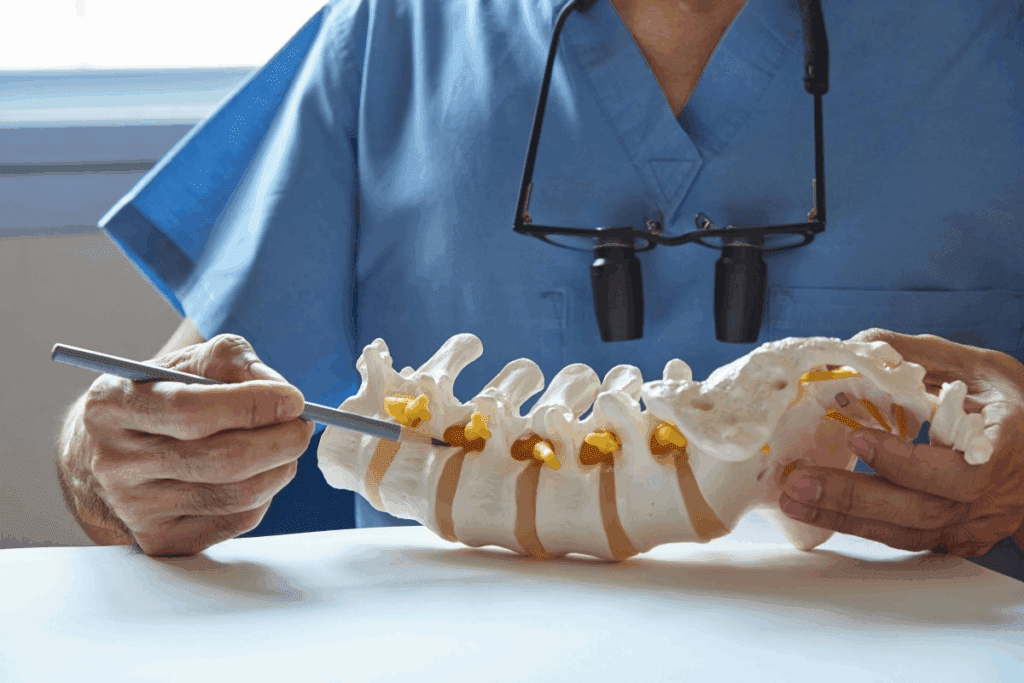
Osteoporosis weakens bones, making them prone to vertebral compression fractures. These fractures can greatly reduce one’s quality of life. They happen when a vertebra collapses, often because of osteoporosis.
Causes of Vertebral Compression Fractures
The main reason for vertebral compression fractures is osteoporosis. This condition weakens bones, making them breakable even from small stresses. Other causes include cancer and trauma, but these are rarer.
People with osteoporosis can get a fracture from something as simple as sitting down quickly. This is because their bones are very weak.
Symptoms and Diagnosis
The symptoms of vertebral compression fractures vary. They often include back pain, which can be mild or severe. Sometimes, there’s no pain, but a person might lose height or develop a kyphotic deformity.
To diagnose, doctors look at medical history, physical examination, and imaging studies like X-rays or MRI. These tools help figure out how bad the fracture is and what treatment is needed.
Impact on Quality of Life
Vertebral compression fractures can really affect a person’s life. They can cause chronic pain, decreased mobility, and functional disability. The pain can make it hard to do daily tasks, affecting overall happiness and freedom.
Also, the spinal deformity from multiple fractures can lead to respiratory problems and digestive issues. This makes things even harder for those affected.
Overview of Minimally Invasive Spinal Procedures
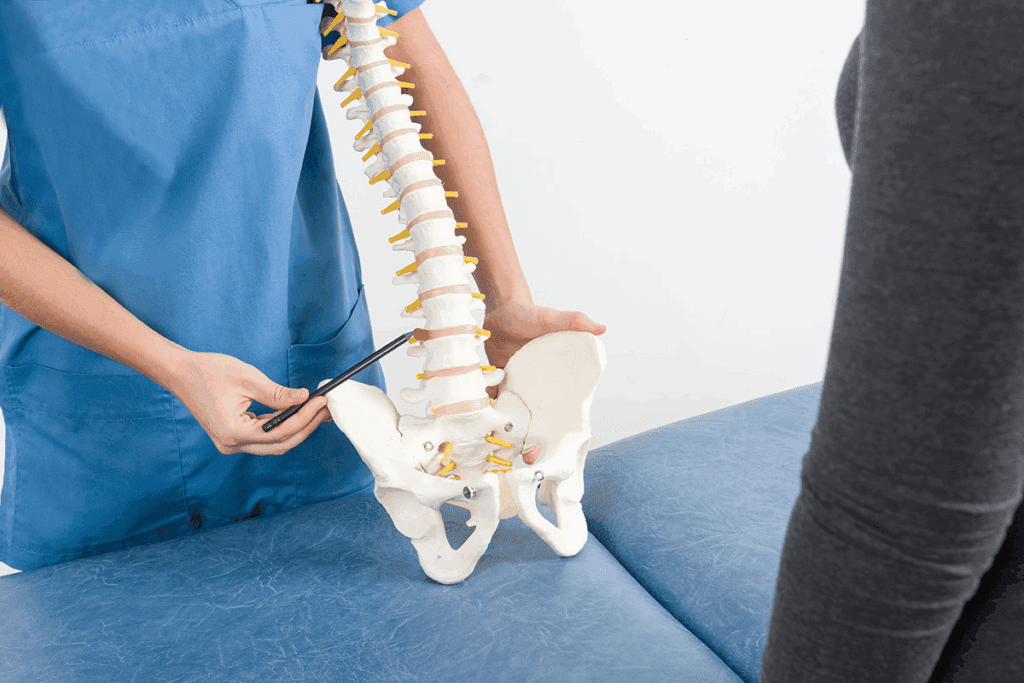
Minimally invasive spinal procedures have changed how we treat vertebral compression fractures. They offer quick pain relief and help stabilize the spine. These new methods aim to cause less damage and help patients recover faster.
The way we treat vertebral compression fractures has seen big changes. Kyphoplasty and vertebroplasty are now top choices. These methods have improved a lot thanks to new tech and better understanding of spinal issues.
Evolution of Treatment Options
Minimally invasive spinal procedures have always been getting better. They started as a way to fix the problems of old surgery methods. Now, kyphoplasty and vertebroplasty use new materials and techniques to work better and safer.
Key advancements include:
- Improved cement materials for better stability and reduced leakage risk
- Enhanced imaging technologies for more precise procedural guidance
- Refinements in technique to minimize complications and improve outcomes
Benefits of Minimally Invasive Approaches
These spinal procedures have many good points. They help patients recover faster, cause less damage, and manage pain well. “These procedures are a big step forward in treating vertebral compression fractures,” say spinal experts.
The main benefits are:
- Less harm because of smaller cuts and less tissue damage
- Good pain relief by making the fractured vertebra stable
- Patients can move better and live better lives
Kyphoplasty and vertebroplasty help patients feel better and move around sooner. This makes their lives better overall.
Kyphoplasty Explained
Kyphoplasty is a special way to fix compressed vertebrae. It’s a minimally invasive method for treating vertebral compression fractures.
The Procedure Step by Step
Kyphoplasty is done under local anesthesia or mild sedation. First, a small needle is inserted into the affected vertebra. This is done under fluoroscopic guidance.
A small balloon is then placed at the site of compression. It’s inflated inside the vertebra, creating a void.
The balloon’s inflation helps restore the vertebra’s original height and angle. After reaching the desired height, the balloon is deflated and removed. This leaves a cavity in the vertebra.
Next, bone cement is delivered into the void. The bone cement stabilizes the vertebra. It provides immediate support and relieves pain.
Equipment and Materials Used
The kyphoplasty procedure uses special equipment, including:
- A fluoroscope for real-time imaging
- A balloon tamp for creating the void
- Bone cement for stabilizing the vertebra
| Equipment/Material | Description | Purpose |
| Fluoroscope | Real-time X-ray imaging device | Guiding the needle and balloon |
| Balloon Tamp | Inflatable balloon | Restoring vertebral height |
| Bone Cement | Specialized cement | Stabilizing the vertebra |
Advanced equipment and precise technique make kyphoplasty a successful treatment for vertebral compression fractures.
Vertebroplasty Explained
Vertebroplasty is a non-surgical method to ease pain. It stabilizes fractured vertebrae with bone cement. This is great for those who can’t have surgery or have very weak vertebrae.
Procedure Step by Step
The process starts with the patient lying on their stomach on an X-ray table. They get local anesthesia to reduce pain. A needle is then guided by X-ray into the fractured vertebra.
Once in place, bone cement is injected. This bone cement injection strengthens the vertebra and pain relief follows. The cement hardens fast, stabilizing the vertebra and easing pain.
Equipment and Materials Used
The tools for vertebroplasty include X-ray machines, needles, and bone cement. The bone cement is made to be safe and strong. It can handle the spine’s stresses.
| Equipment/Material | Description | Purpose |
| X-ray Machine | Provides real-time imaging | Guides the needle into the correct position |
| Needles | Thin, hollow needles | Used for injecting bone cement into the vertebra |
| Bone Cement | Biocompatible material | Stabilizes the fractured vertebra and provides pain relief |
Knowing about vertebroplasty and its tools helps patients see its benefits. It’s a key treatment for vertebral compression fractures.
Kyphoplasty vs Vertebroplasty: Key Differences
When looking at treatments for vertebral compression fractures, knowing the differences between kyphoplasty and vertebroplasty is key. Both are minimally invasive and aim to ease pain. Yet, they have different methods and results.
Procedural Differences
The main difference is in how they’re done. Kyphoplasty uses a balloon to make a space in the vertebra before adding cement. This helps in restoring the vertebra’s height and fixing deformities. On the other hand, vertebroplasty just injects cement directly into the fractured vertebra without trying to fix its height.
Kyphoplasty is seen as more complex because of the balloon step. But, this complexity can lead to better results in height restoration.
Height Restoration Capabilities
Kyphoplasty has a big advantage over vertebroplasty in restoring vertebral height. It uses a balloon to expand the vertebra, aiming to get it back to normal. This can improve spinal alignment and lower the chance of more fractures. Vertebroplasty mainly stabilizes the fracture and eases pain without focusing on height restoration.
Cement Distribution Patterns
The way cement is spread in the vertebra is different for each procedure. Kyphoplasty injects cement into a balloon-created space, leading to a more controlled spread. This might reduce the chance of cement leaking. Vertebroplasty, by injecting cement directly into the fracture, has a less predictable spread.
It’s vital to understand these differences when choosing a treatment for vertebral compression fractures. By looking at how each procedure works, how they restore height, and how cement is spread, doctors can pick the best option for their patients.
Clinical Indications and Patient Selection
It’s important to know when to use kyphoplasty and vertebroplasty. These treatments help with vertebral compression fractures. But, the choice between them depends on several factors.
Ideal Candidates for Kyphoplasty
Kyphoplasty is best for severe vertebral compression fractures or significant kyphosis. It’s for those who haven’t gotten better with other treatments and are in a lot of pain. This procedure can also help restore some height lost in the vertebrae.
Key characteristics of ideal kyphoplasty candidates include:
- Severe vertebral compression fractures
- Significant kyphosis or vertebral body collapse
- Failure to respond to conservative treatment
- Significant pain or disability
Ideal Candidates for Vertebroplasty
Vertebroplasty is for patients with less severe fractures or early stages of fracture. It’s good for those who haven’t found relief with other treatments. This procedure is less invasive and can quickly ease pain.
Key characteristics of ideal vertebroplasty candidates include:
- Less severe vertebral compression fractures
- Pain not adequately managed with conservative treatment
- Early stage of fracture development
Contraindications for Both Procedures
There are some things that make you not a good candidate for these treatments. Active infections, bleeding disorders, or allergies to the materials used are examples. These can make the procedure risky or ineffective.
| Contraindication | Description |
| Active Infection | Presence of an active infection that could compromise the procedure or the patient’s safety. |
| Bleeding Disorder | Conditions that affect blood clotting, increasing the risk of bleeding during or after the procedure. |
| Allergy to Materials | Allergic reactions to bone cement or other materials used in the procedure. |
Choosing the right patient for kyphoplasty or vertebroplasty is key. Knowing the right and wrong candidates helps doctors make the best choice for each patient.
Efficacy and Outcomes Research
Research on kyphoplasty and vertebroplasty shows how well they work for vertebral compression fractures. These studies help us understand their effects on patients.
Pain Relief Comparison
Many studies have looked at how much pain relief kyphoplasty and vertebroplasty offer. They found both methods greatly reduce pain. Kyphoplasty might give a bit more relief because it can straighten the spine.
- Pain reduction: Both procedures significantly reduce pain.
- Kyphoplasty advantage: It might offer better pain relief by straightening the spine.
Functional Improvement Metrics
Improving function is key for these treatments. Studies show both kyphoplasty and vertebroplasty help patients move better and do daily tasks more easily.
- Improved mobility
- Enhanced ability to perform daily activities
Long-term Outcomes and Stability
It’s important to know how long these benefits last. Research shows both treatments keep working well over time. They maintain their effectiveness in reducing pain and improving function.
In summary, kyphoplasty and vertebroplasty are both good for treating vertebral compression fractures. They offer a lot of pain relief and help patients function better. Kyphoplasty might have some benefits, but both treatments have similar long-term results.
Potential Risks and Complications
It’s important for patients and doctors to know about the risks of kyphoplasty and vertebroplasty. These treatments help with vertebral compression fractures but have their own risks. It’s key to manage these risks carefully.
Common Complications in Kyphoplasty
Kyphoplasty, like any surgery, has its own risks. Some common ones include:
- Cement leakage, though less common because of the cavity created before cement is injected
- Infection, a risk with any surgery
- Bleeding or hematoma at the site
- Fracture of nearby vertebrae
Cement leakage is a big worry, as it can cause more problems if it gets into the blood or tissues. But, the risk is lower because of a balloon that makes a cavity. This cavity is then filled with cement under control.
Common Complications in Vertebroplasty
Vertebroplasty also has its own set of risks. Some of these are similar to kyphoplasty’s. Common issues include:
- Cement leakage, a bigger risk because cement is injected directly into the vertebra
- Infection
- Bleeding or hematoma
- Temporary increase in pain
The risk of cement leakage is higher in vertebroplasty. This is because cement is injected directly into the vertebra without making a cavity first. This can cause cement to spread into unwanted places, leading to serious problems.
Risk Mitigation Strategies
To lower the risks of kyphoplasty and vertebroplasty, several steps can be taken:
- Picking the right patients, based on the fracture and their health
- Using top-notch cement and precise injection methods
- Watching on real-time imaging during the procedure to see where the cement goes
- Keeping an eye on patients after the procedure for any signs of trouble
By knowing the risks and using these strategies, doctors can make treatments safer. This helps improve how well patients do and lowers the chance of bad outcomes.
Recovery and Rehabilitation
Knowing how to recover after spinal procedures like kyphoplasty or vertebroplasty is key. Good recovery plans are vital for these procedures to work well.
Post-Procedure Care
Right after the procedure, patients must lie flat for one to two hours. This helps the cement harden around the fracture site.
Immediate Post-Procedure: Soon after, patients can stand and walk with little pain. They can go home the same day, as long as they have someone with them.
Activity Restrictions and Guidelines
Recovery is usually fast, but some activities should be skipped. Patients should not lift heavy, bend, or do strenuous activities for a few weeks.
- Avoid bending or twisting
- Limit heavy lifting
- Gradually increase activity levels
Expected Timeline for Recovery
The recovery timeline varies, but most feel less pain in a few days. It usually takes 4-6 weeks to get back to normal.
Follow-up Care: It’s important to see healthcare providers regularly. This helps track healing and solve any issues.
Advanced Care Protocols and Standards
Liv Hospital is known for its top-notch care in vertebral procedures. It follows international standards and best practices. This is seen in how it treats vertebral compression fractures.
Liv Hospital’s Approach to Vertebral Procedures
Liv Hospital focuses on excellence in vertebral care. It uses advanced care protocols for kyphoplasty and vertebroplasty. The team of experts sticks to strict academic protocols, ensuring care meets international standards.
The hospital’s team works together, including radiologists, orthopedic surgeons, and pain management specialists. This teamwork provides complete care, from start to finish.
International Standards and Best Practices
Liv Hospital follows best practices in vertebral procedures. It ensures patients get the safest and most effective treatments. The hospital’s use of the latest technology and innovative methods shows its commitment to international standards.
| Procedure | International Standards | Liv Hospital’s Approach |
| Kyphoplasty | Minimally invasive technique | Utilizes advanced balloon technology for optimal vertebral height restoration |
| Vertebroplasty | Precise cement injection | Employs high-resolution imaging for accurate cement placement |
Liv Hospital leads in treating vertebral compression fractures. It uses advanced care protocols and follows international standards. Patients get top-quality care that focuses on their safety and recovery.
Conclusion
Kyphoplasty and vertebroplasty are effective for treating vertebral compression fractures. They offer a lot of pain relief and help stabilize the spine. The right choice depends on the patient’s needs and the fracture’s details.
It’s important to know the differences between these treatments. Kyphoplasty can restore height and has a unique cement distribution. Vertebroplasty, on the other hand, focuses more on stabilizing the vertebra.
Choosing the right patient for each procedure is key. Healthcare providers must consider the fracture’s severity and the patient’s health. This ensures the best outcome for the patient.
In summary, both kyphoplasty and vertebroplasty are good options for vertebral compression fractures. Understanding their benefits and differences helps patients make better choices. This leads to better pain relief and a better quality of life.
FAQ
What is the main difference between kyphoplasty and vertebroplasty?
Kyphoplasty uses a balloon to lift the vertebra before adding bone cement. Vertebroplasty just adds bone cement without trying to lift the vertebra.
What is kyphoplasty used for?
Kyphoplasty is a small surgery to fix broken vertebrae. It lifts the vertebra and holds it in place with bone cement.
What is vertebroplasty?
Vertebroplasty is a small surgery. It injects bone cement into a broken vertebra to stabilize it and ease pain.
How do kyphoplasty and vertebroplasty relieve pain?
Both methods stabilize the broken vertebra with bone cement. This reduces movement and inflammation, which helps ease pain.
What are the benefits of minimally invasive spinal procedures like kyphoplasty and vertebroplasty?
These procedures have many benefits. They reduce recovery time, cause less tissue damage, and provide quick pain relief compared to open surgery.
What causes vertebral compression fractures?
These fractures often happen due to osteoporosis, which weakens bones. Trauma and cancer can also cause them.
How are vertebral compression fractures diagnosed?
Doctors use X-rays, CT scans, or MRI to see the fracture and judge its severity.
What are the symptoms of vertebral compression fractures?
Symptoms include back pain, loss of height, a hunched posture, and limited mobility.
What is the recovery process like after kyphoplasty or vertebroplasty?
Recovery starts with a short hospital stay. Then, rest and gradually return to normal activities, following the doctor’s advice.
Are there any risks or complications associated with kyphoplasty and vertebroplasty?
Yes, risks include cement leakage, infection, and nerve damage. But these are rare with the right technique and patient selection.
How do I know if I’m a candidate for kyphoplasty or vertebroplasty?
You might be a candidate if you have a painful fracture that hasn’t gotten better with other treatments. A doctor will decide this.
What is the difference between height restoration capabilities of kyphoplasty and vertebroplasty?
Kyphoplasty can lift the vertebra with a balloon. Vertebroplasty does not try to lift the vertebra.
How do kyphoplasty and vertebroplasty compare in terms of pain relief?
Both methods can relieve pain. But how much relief you get depends on your situation and the procedure used.
References
- Patel, N., et al. (2022). Balloon kyphoplasty vs vertebroplasty: A systematic review. Cureus, 14(4), e24290. https://www.ncbi.nlm.nih.gov/pmc/articles/PMC9058004/


